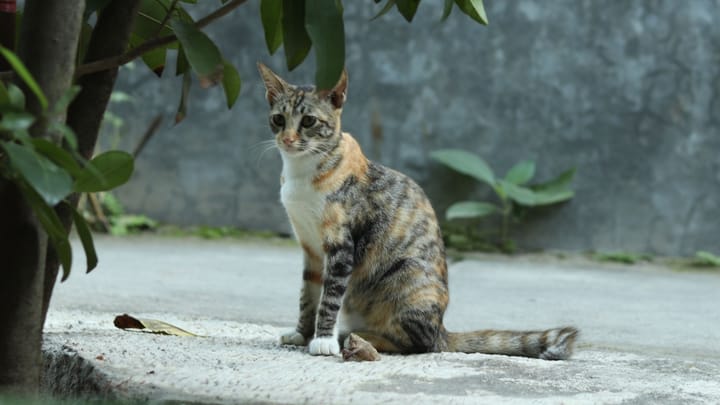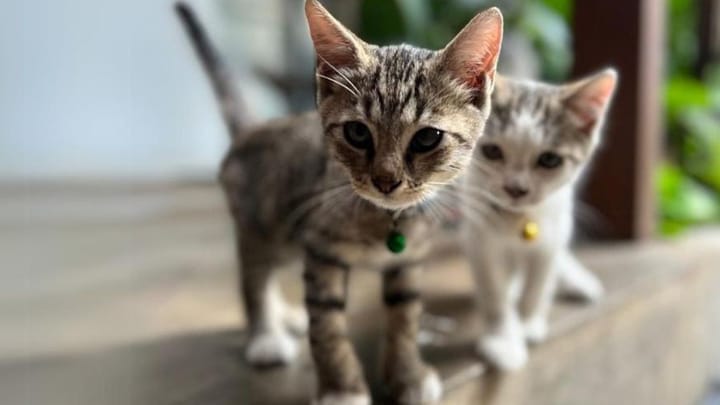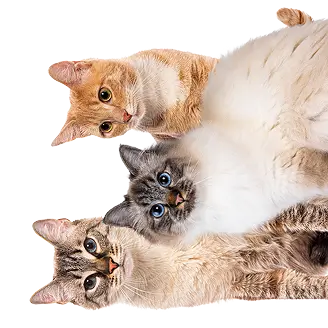Javanese
Other names : Oriental Longhair, Mandarin


Their lustrous, silky fur and slender bodies give these beautiful cats a refined look. You won’t be able to stop yourself from falling under their sweet, pure and intense charm. Their appearance is delicate, yet they are both muscular and flexible. Only their “brothers”, Orientals, are even close to being considered their equals. However, their meowing can be infuriating... and they are generally described as difficult and loud cats.
|
Life expectancy |
The Javanese has a life expectancy of between 10 and 20 years |
|
Temperament |
|
|
Adult size |
Female
Approximately 12 in
Male
Approximately 12 in
|
|
Adult weight |
Female
Between 4 and 11 lb
Male
Between 7 and 13 lb
|
|
Coat colour
Black / seal, blue / grey-slate, chocolate, lilac / lilac, cinnamon / cinnamon, fawn / fawn, red/ cream, white, silver / golden / smokey / shaded / chinchilla Caramel and Apricot coats are not recognised by all associations, but are recognised by some. |
Black Brown White Red Cream Blue |
|
Type of coat
Mid-length |
Long |
|
Eye colour
Intense green, blue, odd / varied for white Orientals |
Blue
Green
Odd-eyed
|
Javanese are very similar to mid-length Orientals. In Europe, they are also known as Mandarins.
More details about the Javanese
Javanese: Origins and history
This superb breed appeared in England in the fifties. After the Second World War, creative breeders crossed Siamese with existing breeds such as the British Shorthair and even domestic cats. The kittens born from this cross breeding were subsequently crossed with other Siamese. A few years later, only colour differentiated Siamese from Orientals, the latter did not have the Siamese’s "pointed" features. The wide variety of colours produced led breeders attributing breeds to all different colours of these cat, such as the brown variety being known as Havana Browns. However, far too many colours were produced to give each one a separate breed name! Thus, short-haired cats were simply named Oriental Shorthairs, and long-haired cats are known as Oriental Longhairs or Javanese/Mandarins. In 1970, both breeds started to appear in the United States.
Physical characteristics of the Javanese
Like all Oriental cats, Javanese are long and slender. They may look delicate, but they are in fact powerful and agile cats.
Javanese: Characteristics
Javanese: Behaviour
Breed compatibility Javanese
Javanese: Purchase price
We do not have enough data to set an average price for a Javanese cat as it is a very rare cat breed. However, depending on their lineage, upbringing, age and sex, the price will vary. It will also cost around £25 a month to keep them in good health, provide them with good quality food and meet their needs.
Javanese: Shedding
Light
Despite their mid-length coat, they only shed a very small amount of fur. However, during their moulting periods, they can lose significant amounts of fur and require more frequent brushing.
Javanese: Grooming
Maintenance of a Javanese is fairly simple, given their lack of an undercoat. Weekly brushing using a fine comb, to prevent knots from forming is usually sufficient.
Javanese: Health
Javanese live between 10 and 20 years, with an average life expectancy of 15 years.
Due to their lack of an undercoat, these cats don’t deal well with cold temperatures.
These cats usually expend so much energy that they have no predisposition to obesity as they burn so many calories.
Progressive retinal atrophy: this disease is hereditary. It causes blindness in the affected cat over a short period of time. The disease can manifest itself at any point in the cat’s life. When it appears later in their life, it develops gradually, so that the cat has a reasonable amount of time to adapt to its blindness. However, if the cat is affected at a young age, their blindness is more severe and the cat has very little time to adapt.
Kidney amyloidosis: is also a hereditary disease, and is fortunately quite unusual. Unfortunately, the outcome is fatal. In addition, the disease is becoming more and more widespread and clinical signs commonly appear between the ages of 1 and 5 years. Renal amyloidosis can easily be confused with classic renal failure because the symptoms are very similar, but kidney amyloidosis is more devastating. There is currently no screening test for this disease, but science is constantly evolving, so it will not be long before one is found.
Javanese can also suffer from the same diseases as other domestic cats, such as oral diseases.
Crossbreeding with Siamese, Balinese and Orientals are permitted.


